You’ve probably heard of the mule and the Bengal cat, but what about the jaglion and the zubron? The world has many weird and wonderful hybrid animals — some of which have been created naturally (for example, when the territories of two similar types of animals overlap), while others are purely man-made — either intentionally or accidentally.
It turns out that the animal kingdom is a lot more mixed-up than we thought.
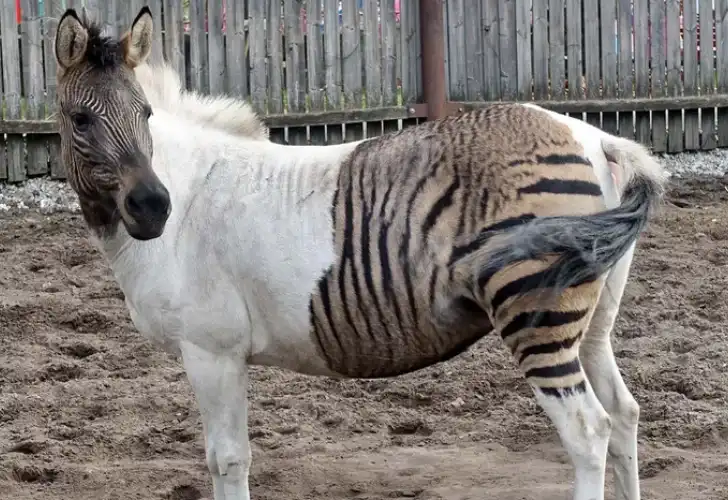
Zorse
If a hybrid begins with a “Z,” you can be pretty sure it’s part-zebra. The generic term for a cross between a zebra and any other equine is a zebroid, but “zedonk,” “zebrule” and “zebra mule” are also used. For instance, this is a zorse called Eclyse, who lives at a safari park in Germany and was captured on camera by Instagram user @da_vinci_creations during his visit.
Zonkey
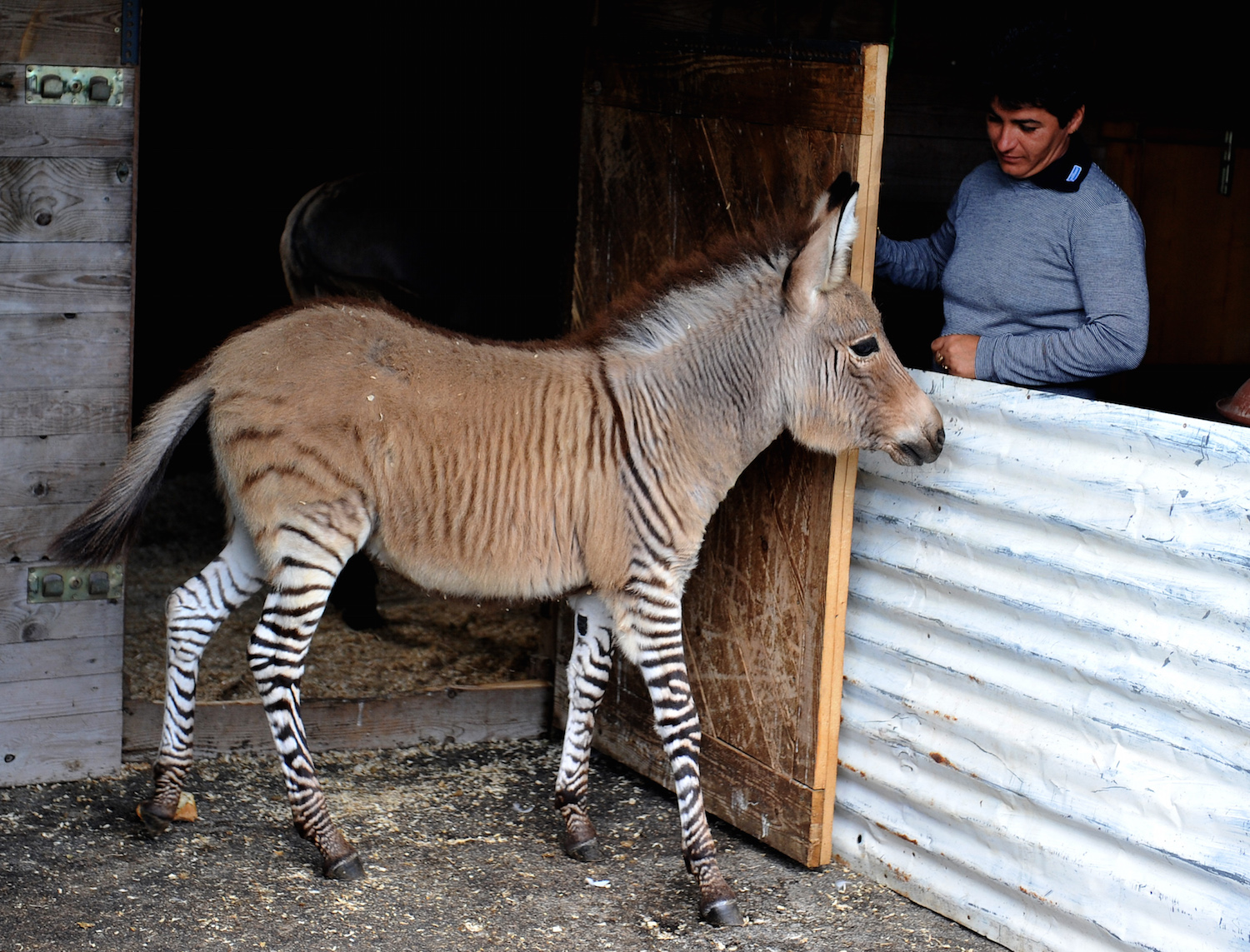
Another zebra hybrid is the zebra/donkey cross, aka the zonkey. Like many hybrids, it’s a sterile creature, meaning it can’t produce offspring of its own. While zonkeys can survive in the wild, they’re more likely to be found in captivity around the world, like this little guy Ippo, who was born in Florence in 2013.
Jaglion
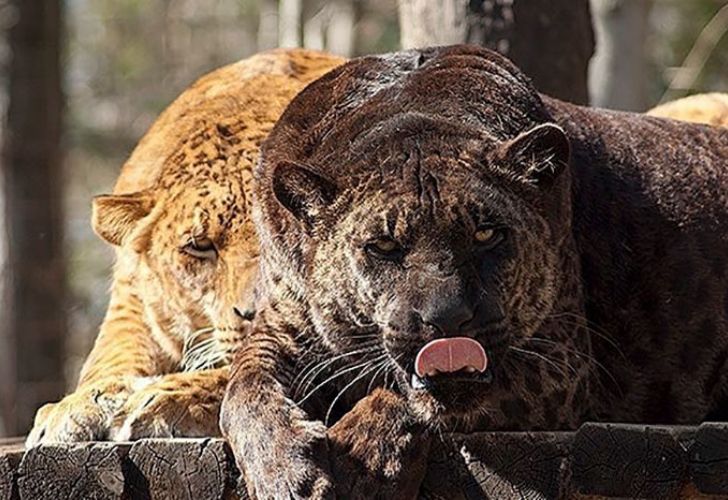
A jaglion (also called a jaguon) is the offspring between a male jaguar and a female lion (lioness). On April 9, 2006, two Jaglion babies, a female called Jahzara and a male called Tsunami, were born unexpectedly at Bear Creek Wildlife Sanctuary in Ontario, Canada. According to the sanctuary, “beautiful, perfect, healthy and active” Tsunami and Jahzara might be the only jaglions in the world.
Geep
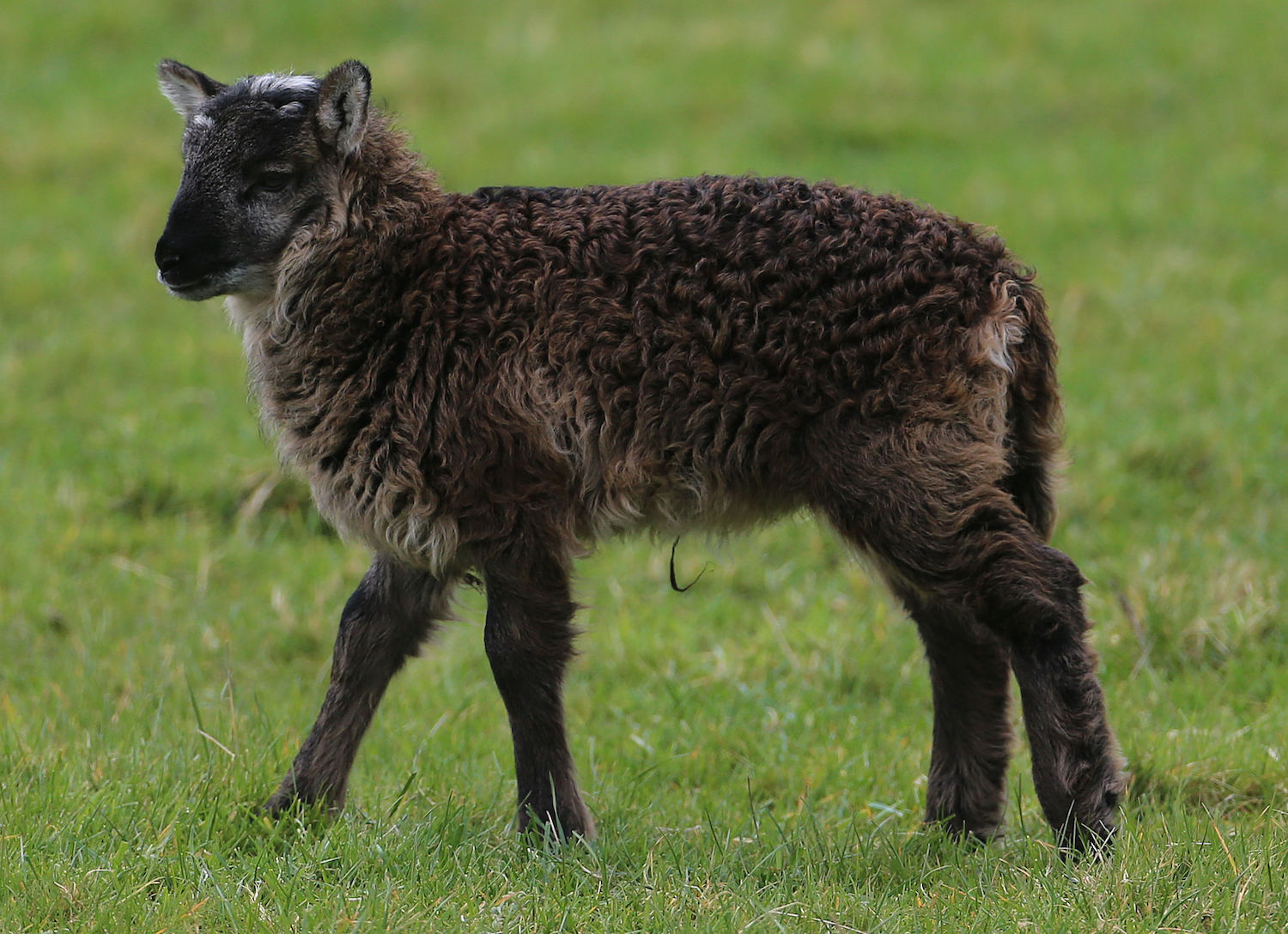
A half-goat, half-sheep — known as a geep — is a rare hybrid animal, due to the fact that goats have 60 chromosomes and sheep have 54. So, in most cases, geep don’t survive throughout embryonic development, but those who are born healthy have 57 chromosomes. Such an occurrence is always a newsworthy event, such as when Paddy Murphy welcomed a geep on his farm in County Kildare, Ireland, in 2014.
Grolar Bear
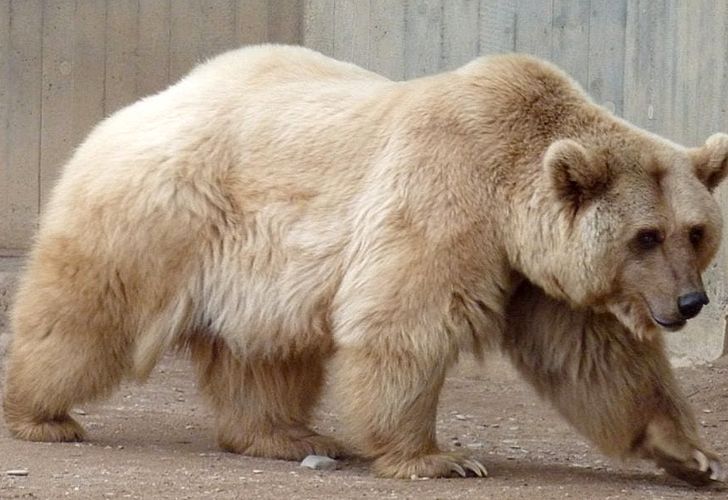
A grizzly bear/polar bear hybrid — which may be called a pizzly bear, a prizzly bear or a grolar bear — is a rare ursid hybrid (any hybrid of two species within the family Ursidae) that has occurred both in captivity and in the wild. In 2006, the DNA of a strange-looking bear that had been shot in the Canadian Arctic was tested and the hybrid was confirmed. According to Beside Magazine, hunters are reporting more and more cases of grolars in Alaska and the Canadian Arctic.
Coywolf
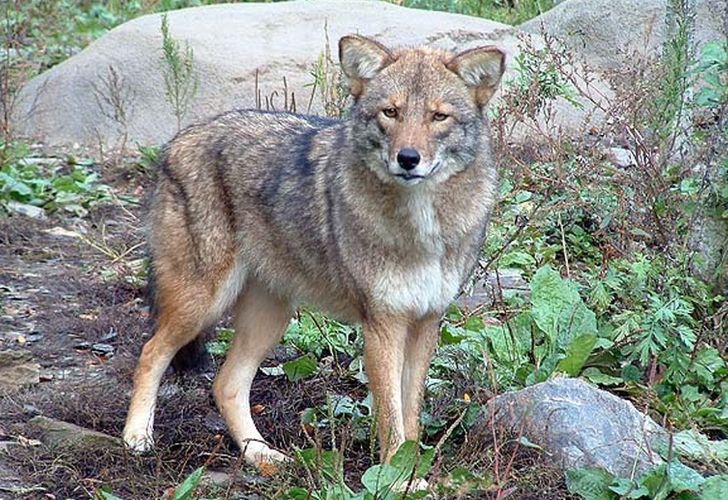
The Best in Show winner of the 2018 Canadian Wildlife Photography of the Year competition was a photograph of an eastern coyote in Alma, New Brunswick. However, there is more to this animal than meets the eye. Recent research found that the eastern coyote is actually a hybrid species, with DNA from western coyotes, domestic dogs and wolves, leading to the name “coywolf.”
Hinny
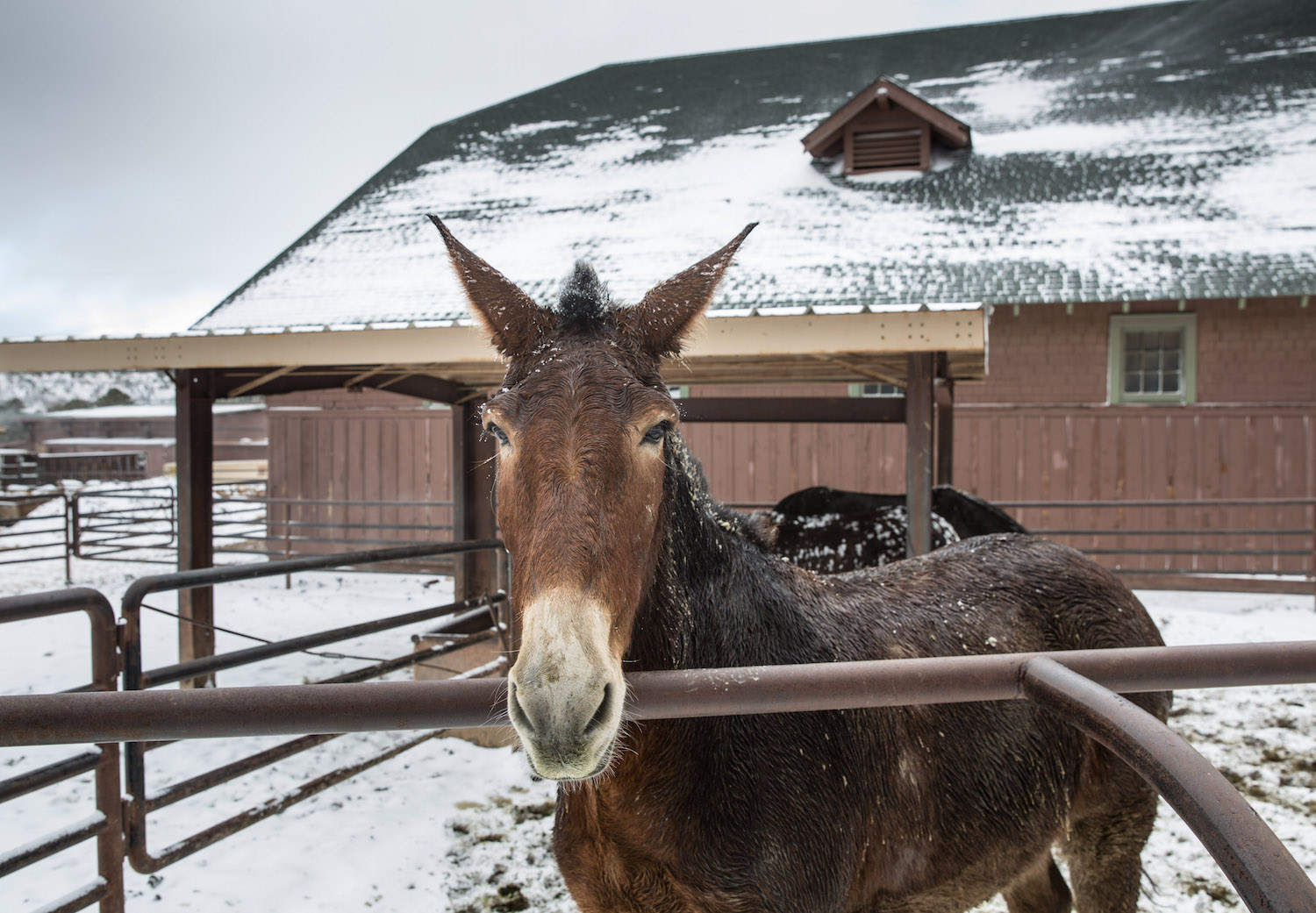
A hinny is the result of breeding between a female donkey and a male horse. It has the body of a donkey and the extremities of a horse and is often mistaken for a mule (a hybrid between a male donkey and a female horse). However, a hinny is generally smaller — and rarer — than a mule. Hinnies, which are not generally bred for commercial use, usually have horse-shaped skulls and long, elegant tails.
Zubron
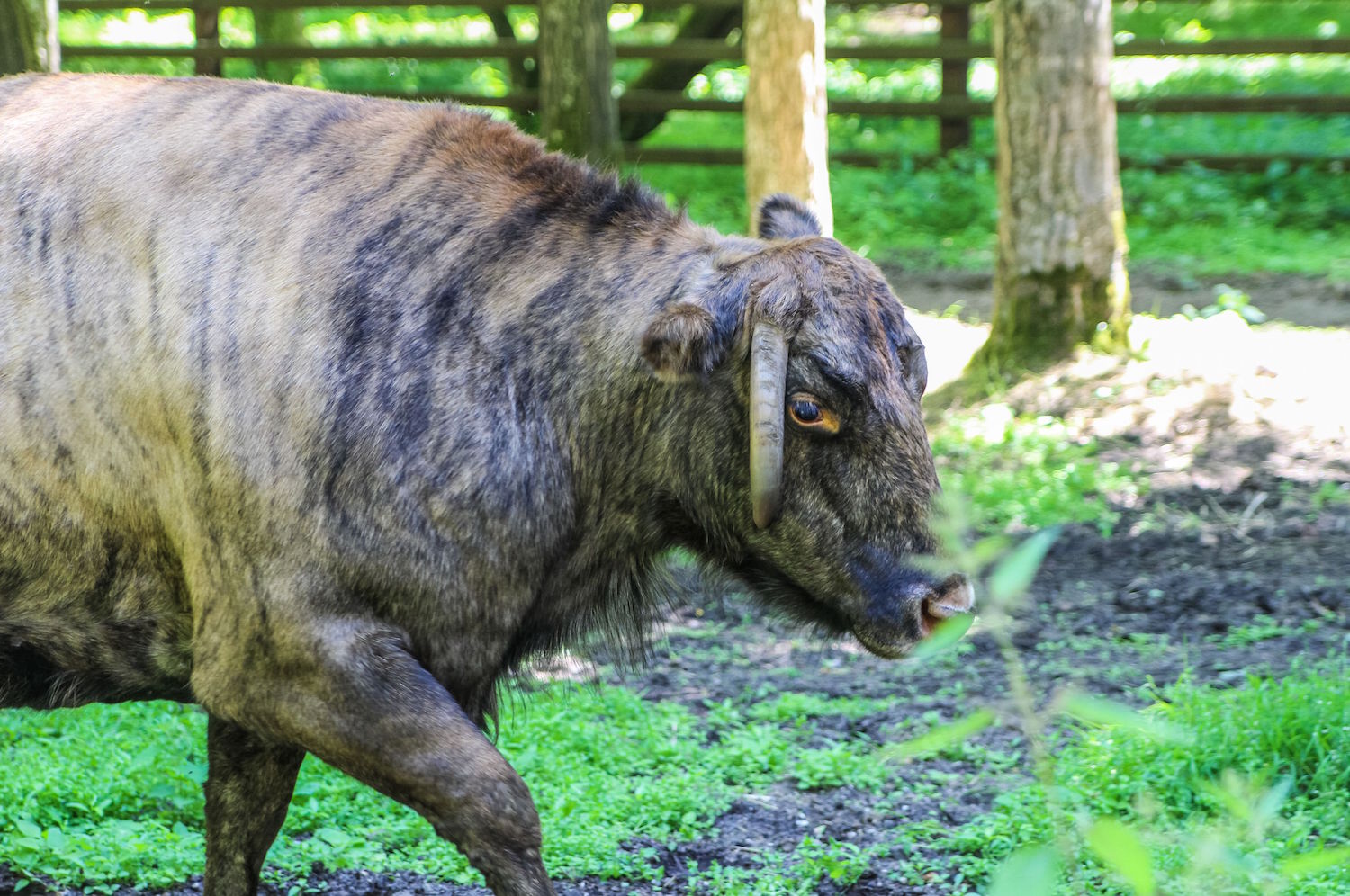
The Zubron, a lab-created hybrid of the domestic cow and the wisent (European bison), was considered as an alternative to domestic cattle after WWI, due to its hardiness and lower susceptibility to disease. A Polish breeding program created 71 Zubron, but it was discontinued in 1980. Today, a herd of Zubron can be seen in Bialowieski National Park, Poland.
Savannah
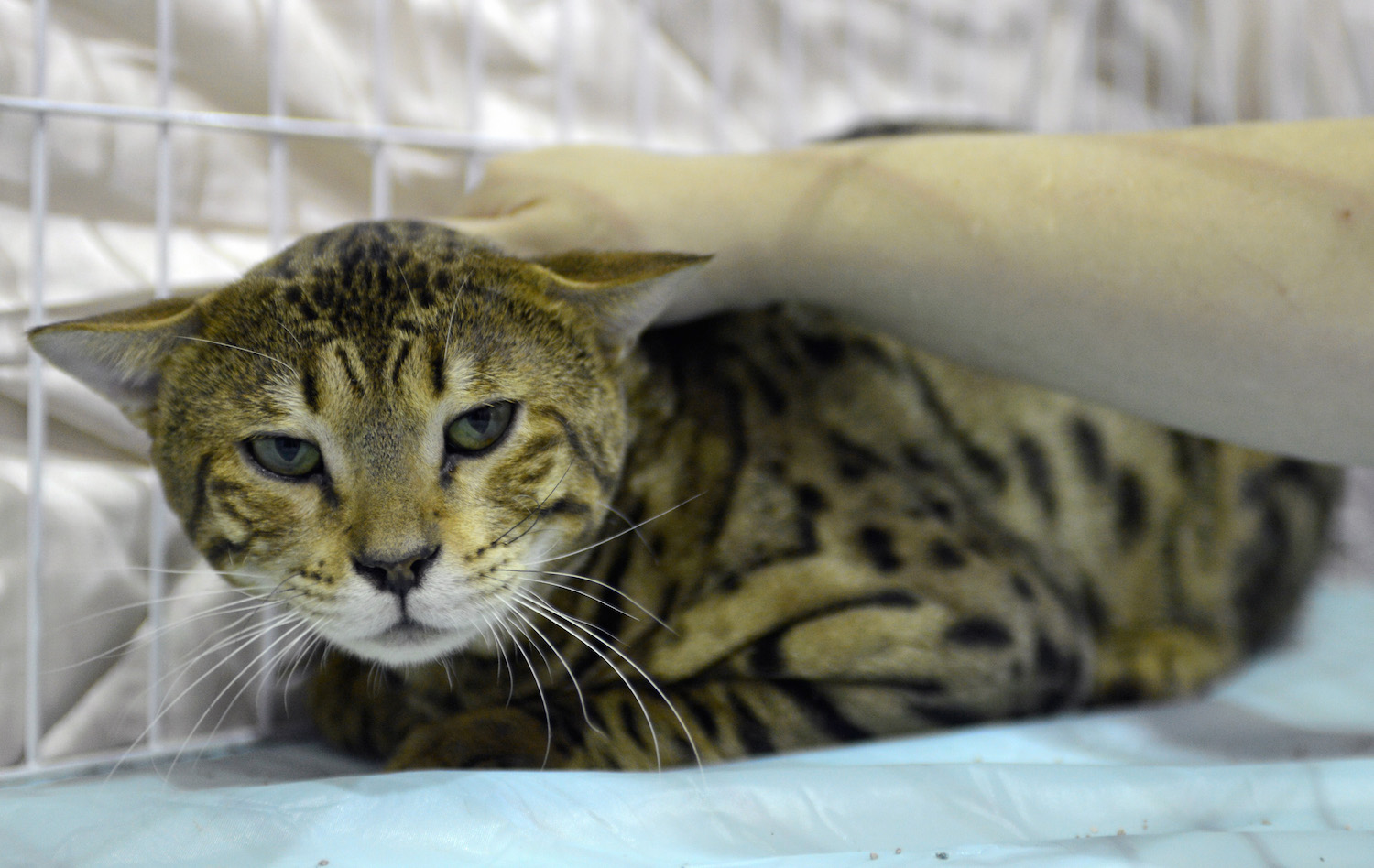
A Savannah cat is the name given to the offspring of a domestic cat and a serval — a medium-sized, large-eared wild African cat. The first Savannah cat (aptly named Savannah) was born on April 7, 1986, after breeder Judee Frank accidentally crossbred a male serval and a Siamese cat, and in 2001 the International Cat Association accepted it as a new registered breed. Savannahs are much more social and loyal than typical domestic cats, and can even be trained to walk on a leash and taught to play fetch.
Mule
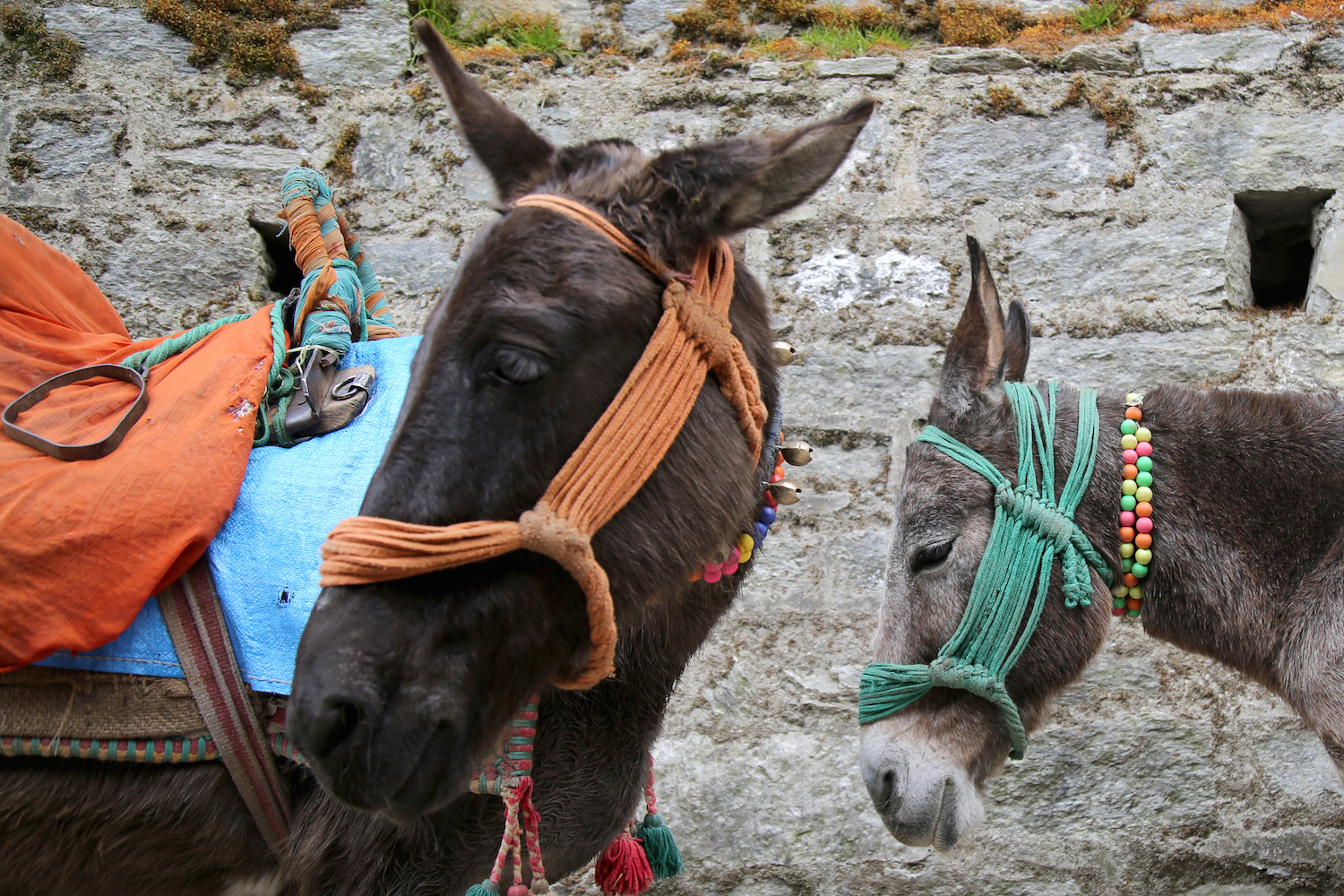
The offspring of a male donkey and a female horse, a mule is one of the most commonly used working animals in the world. Because they need less food and have more stamina than horses of the same weight and height, they can withstand harsher working environments. Mules are 99.9% sterile, due to an uneven chromosome count, but in very rare cases female mules have given birth to foals. China breeds the most mules in the world — more than seven million each year.
Mulard
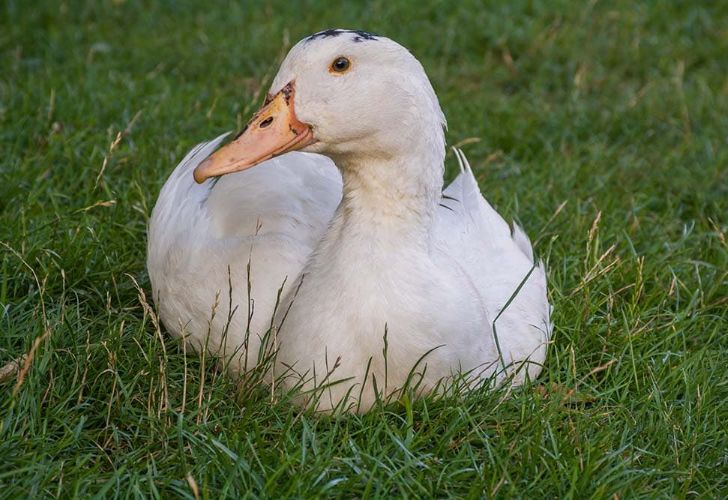
The mulard or moulard (a mixture of a mallard duck and a muscovy duck) is a commercially produced domestic duck hybrid, farmed for foie gras and lean meat. Mulards are sterile, hence the nickname “mule ducks.” It’s possible to produce mulards naturally but artificial insemination tends to be more successful. Instagram user @braetgaarden likes to share photos of her mulards.
Dzo
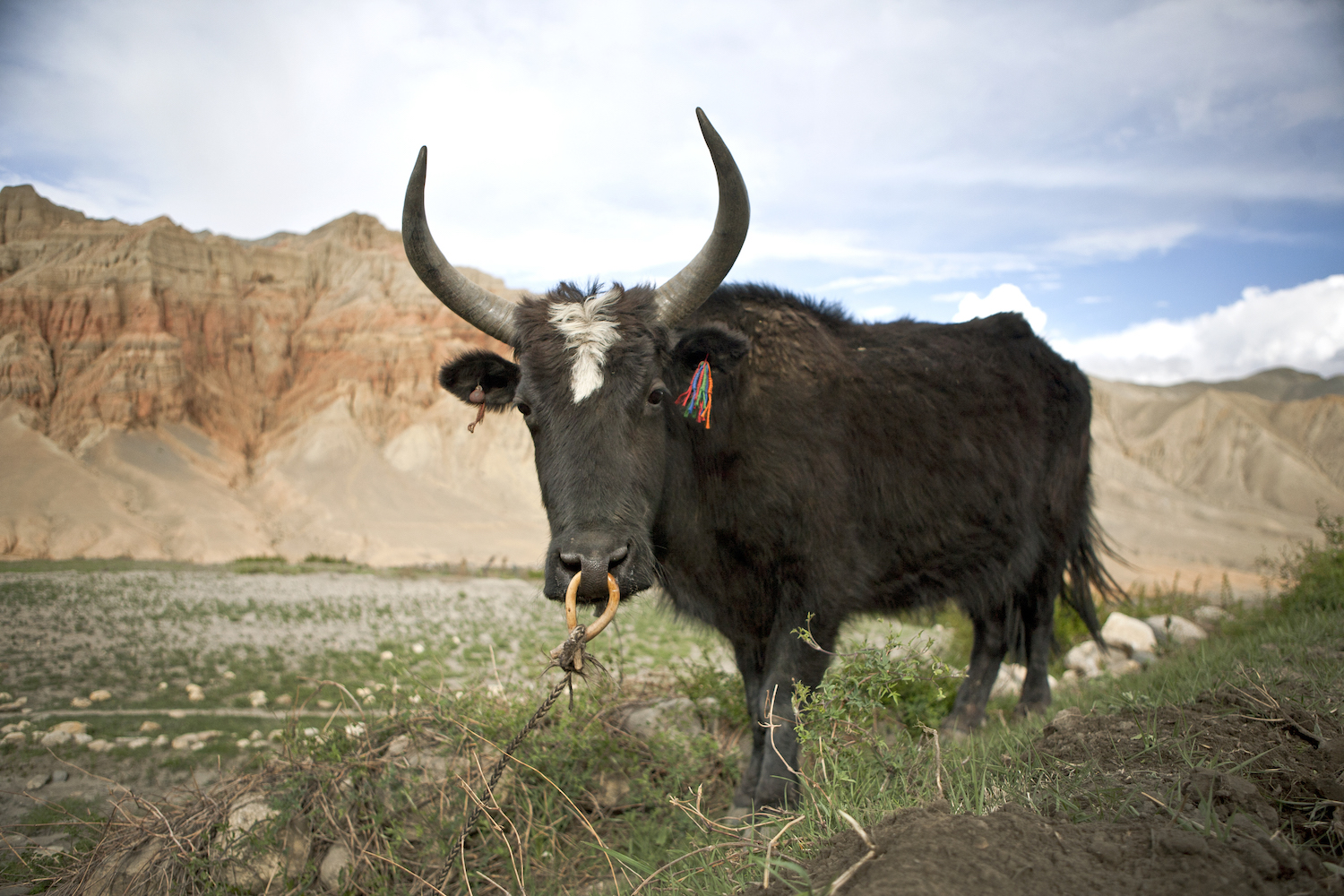
Dzo is one of many names for a hybrid of yak and domestic cattle, a common livestock animal in Tibet. It technically refers to the male hybrid, while dzomo or zhom is used for the female. (In Mongolia it is called a khainag.) The dzo is larger and stronger than cattle or yak, and in Mongolia and Tibet it is believed to be more productive in terms of both milk and meat.
Wolfdog
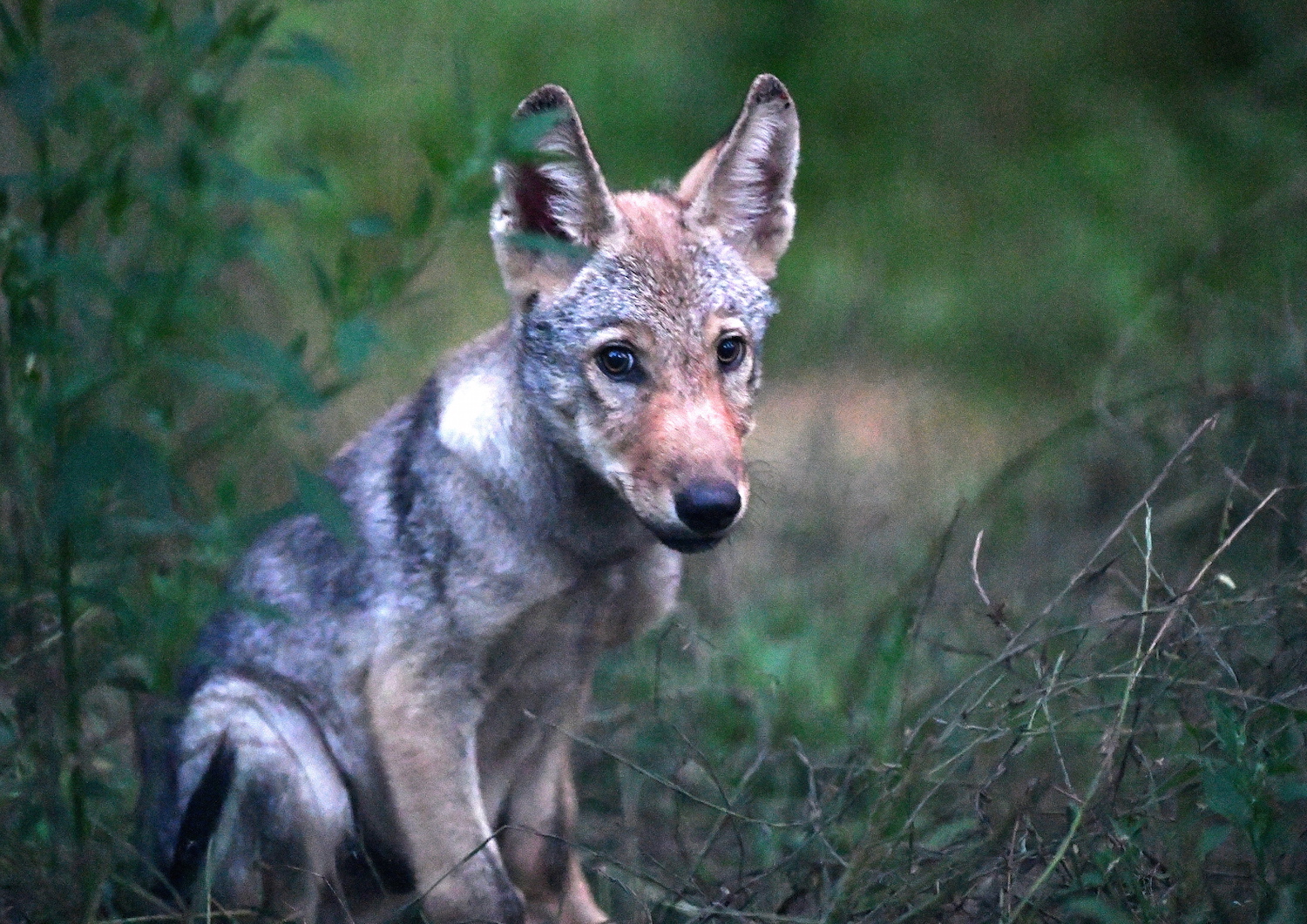
When a wolf and a dog mate, the offspring is called a wolfdog, which may also be called a wolf–dog hybrid or wolf hybrid. (The American Veterinary Medical Association and the United States Department of Agriculture both use the term wolf-dog hybrid.) Rescue organizations consider any dog with wolf heritage within the last five generations to be a wolfdog, including some established wolfdog breeds, such as the Czechoslovakian wolfdog and the Saarloos wolfdog. Because wolfdogs are genetic mixtures of wolves and dogs, their physical and behavioral characteristics are unpredictable.
Bengal Cat
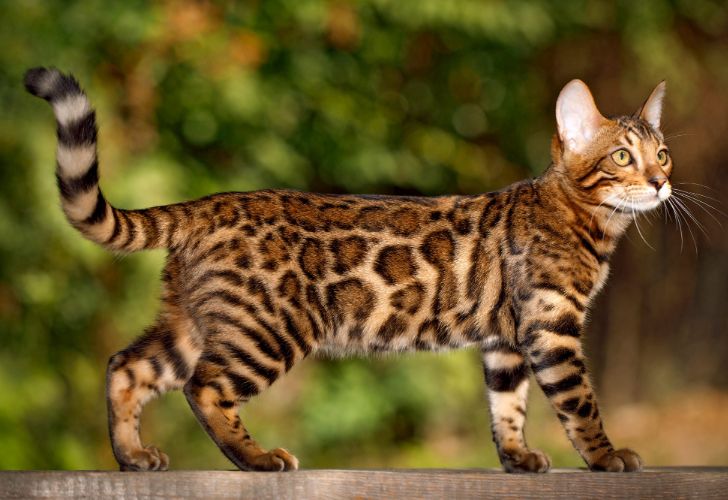
The Bengal cat, a wildcat hybrid, began in the United States in 1963, when the geneticist Jean Mill crossed a domestic cat with the leopard cat Prionailurus bengalensis bengalensis, which is native to South Asia. The Bengal is typically confident and friendly and has a bright orange or light brown coat with “wild” markings, as can be seen on Caesar, a 4-year-old Bengal cat from the Netherlands who has his own Instagram page.
Blood Parrot Cichlid
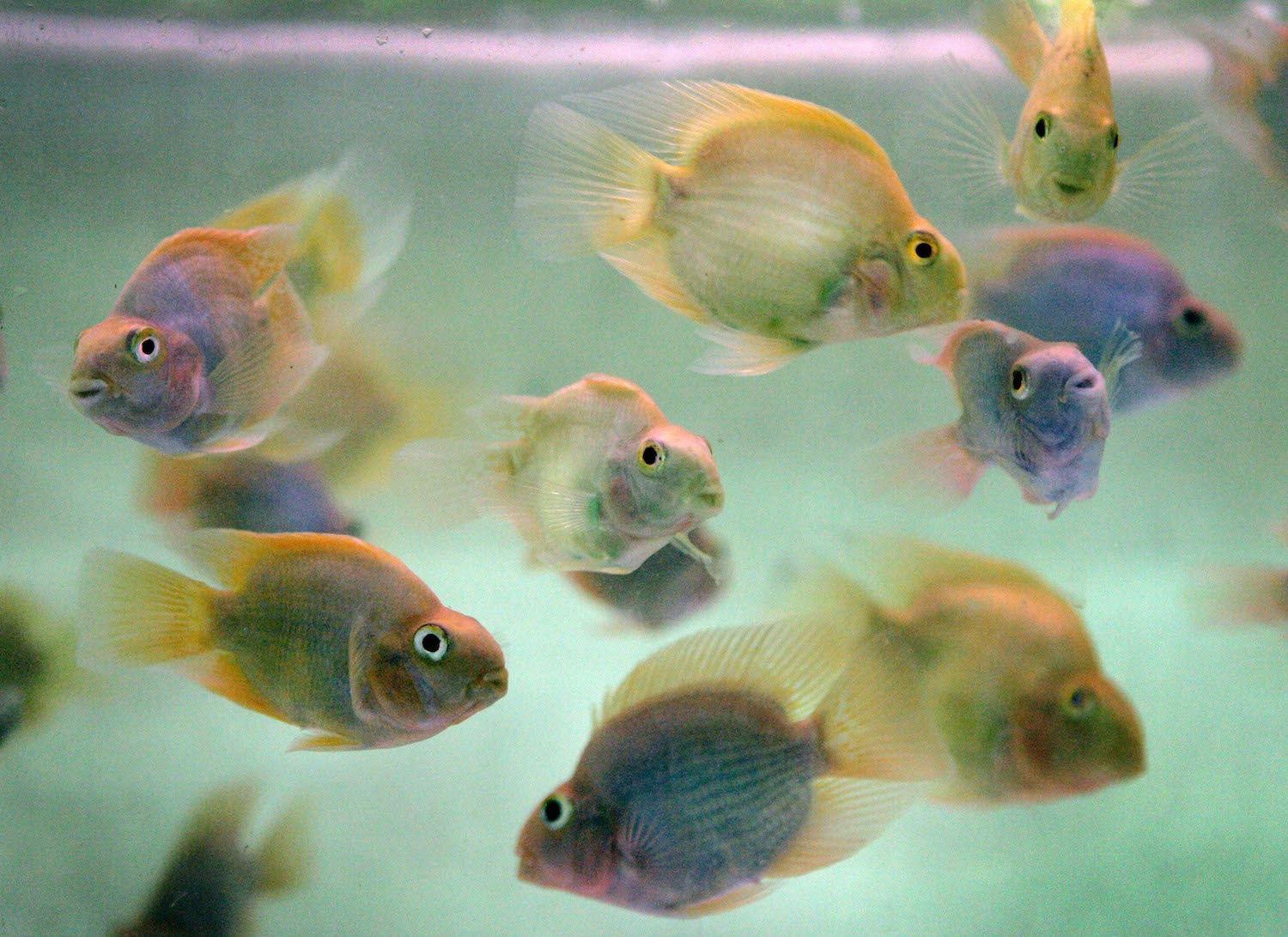
The blood parrot cichlid is a hybrid of the Midas, a large cichlid fish found in Costa Rica and Nicaragua, and the redhead cichlid. Also known as parrot cichlid or bloody parrot, this fish hybrid suffers from various anatomical deformities, such as an unnaturally round body shape and a very small mouth opening that makes malnutrition a risk. Despite being one of the most controversial man-made fish hybrids, it is also one of the most popular additions to domestic aquariums.
Beefalo
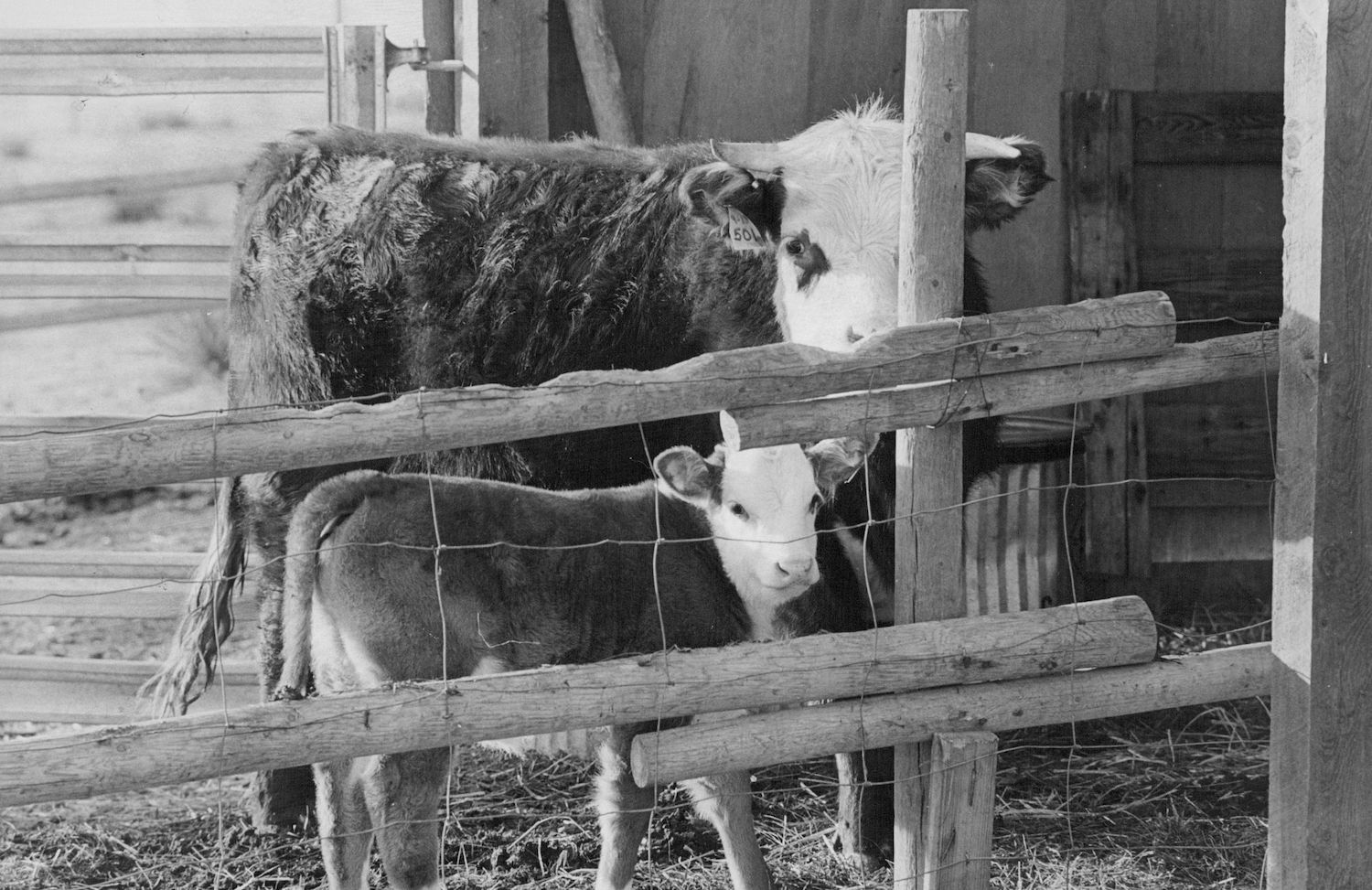
Beefalo are fertile hybrid offspring of domestic cattle (typically male) and American bison (typically female) in managed breeding programs. These species were accidentally crossed for the first time in North America in the mid-1700s, and by 1880, scientists were deliberately engineering the specimen to boost beef production. According to the American Beefalo Association, “crossbreeds are hardier, are more economical (and less care-intensive) to nurture, and produce meat that’s superior to that of the common cow.”
Liger
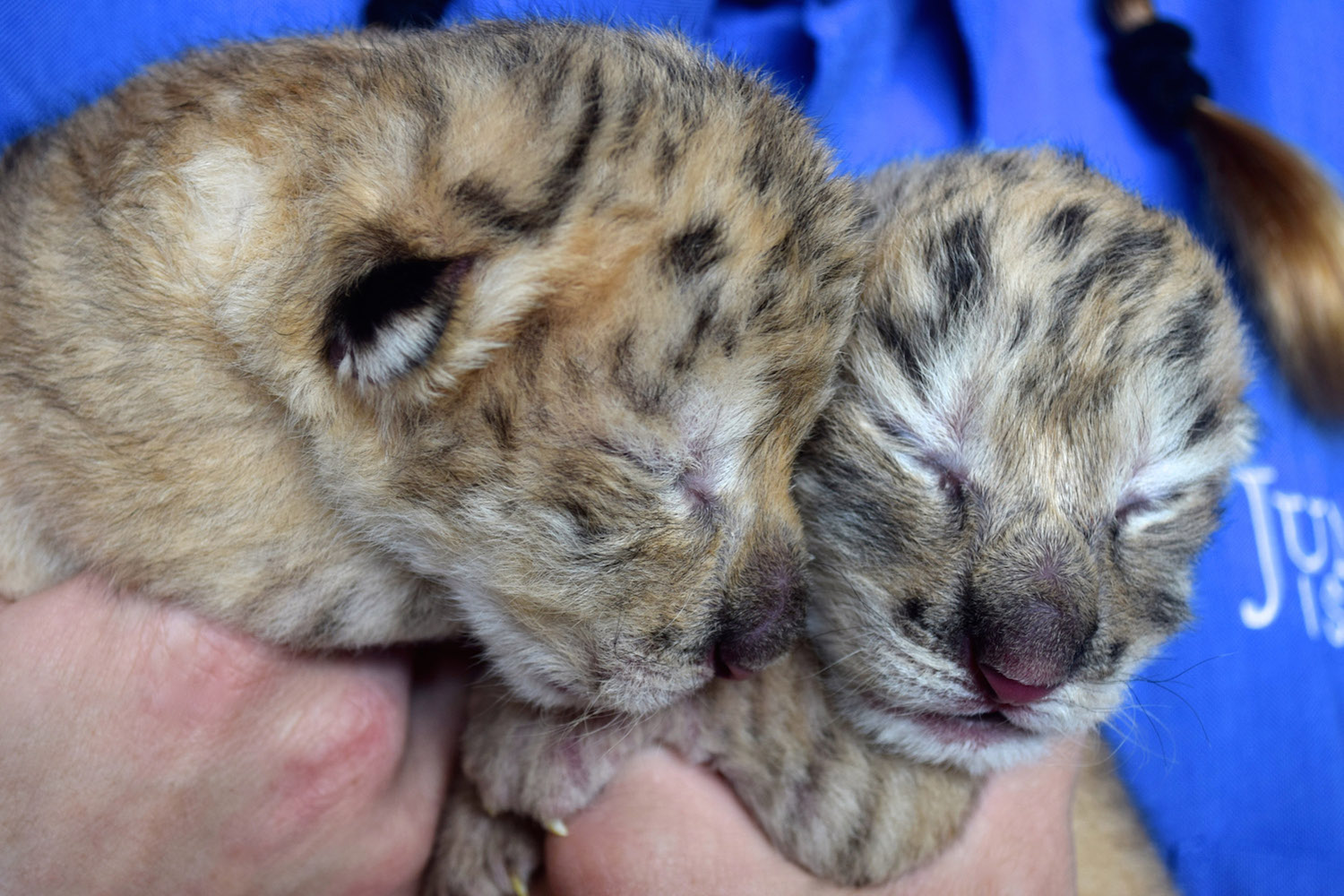
When a male lion mates with a tigress, the result is a liger (or several of them). Today, ligers only exist in captivity, since the paths of their parental species don’t cross in the wild, but it may not always have been that way. In 2014, these two liger cubs were born at Jungle Island in Miami, Florida, the offspring of a royal white Bengal tiger named Saraswati and an African white lion named Ivory.
Litigon
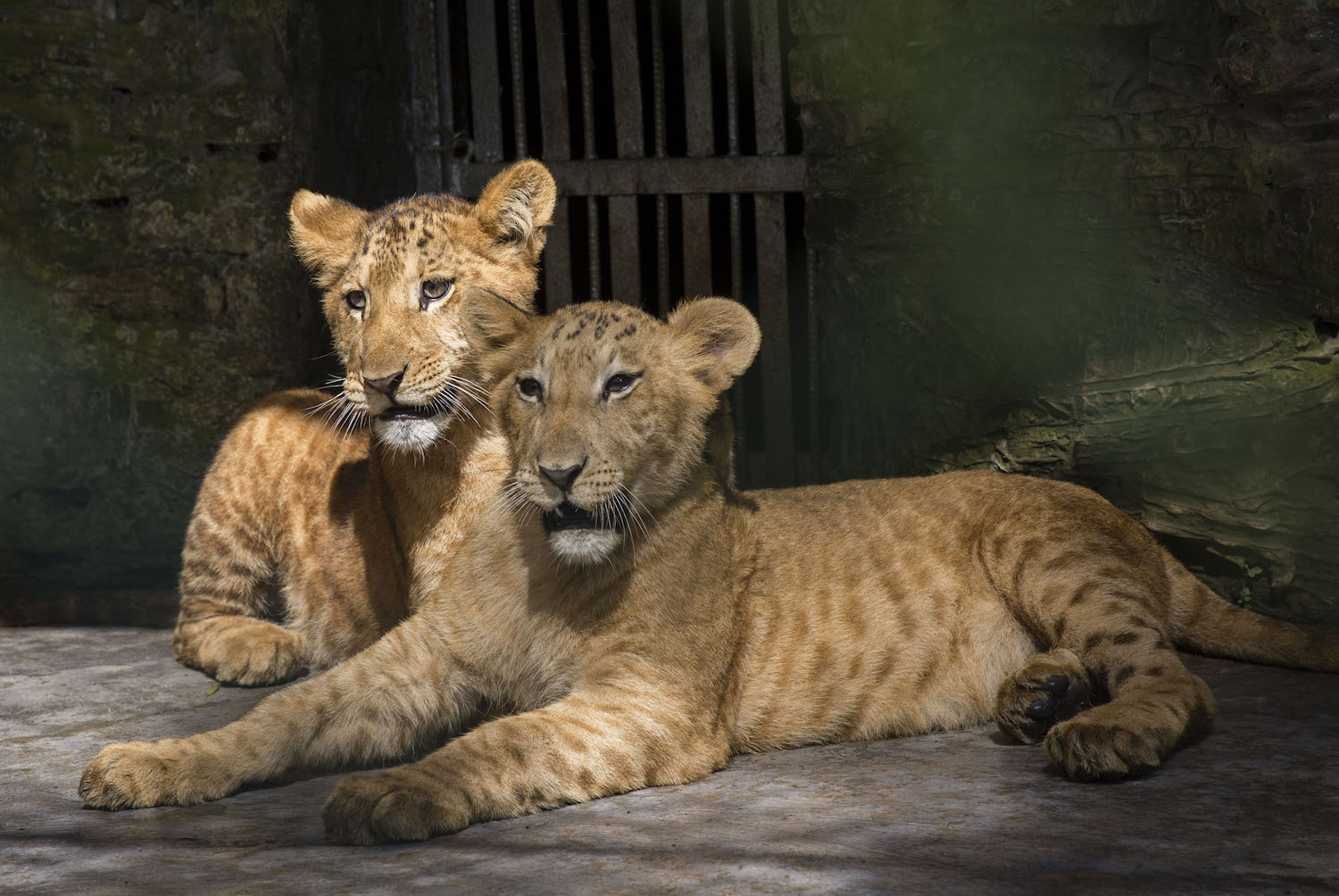
A litigon or tigon is the opposite of a liger: a hybrid cross between a male tiger and a female lion. And when a male lion and a female tigon mate, their offspring is called a litigon. In 2017, a safari zoo in Haikou, China, showed off two litigons born from a 6-year-old tigon on June 24, 2016. A total of 11 ligers and six tigons were born at the zoo between 2005 and 2011.
Wholphin
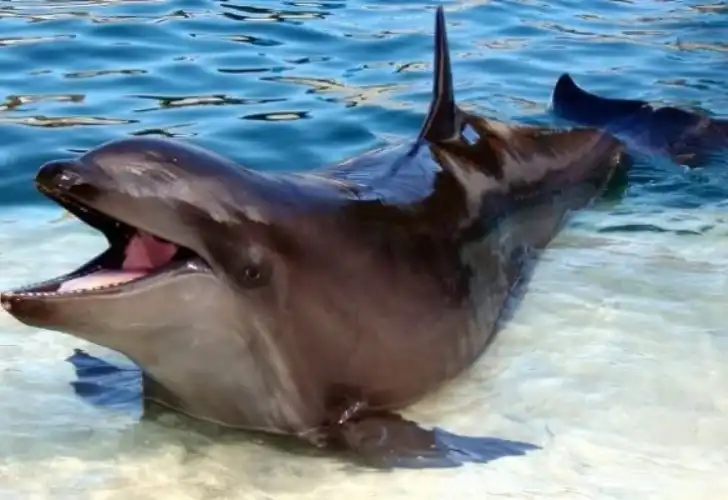
A wholphin (or wolphin) is a rare hybrid, the offspring of a female bottlenose dolphin with a male false killer whale. Although the name suggests a dolphin/whale hybrid, both parents are within the “oceanic dolphin” family and the “toothed whale” suborder. There may only be one wholphin in captivity: Kekaimalu, pictured here with marine mammal trainer Emmalee Speer at Sea Life Park in Hawaii.
Sponsored Content





